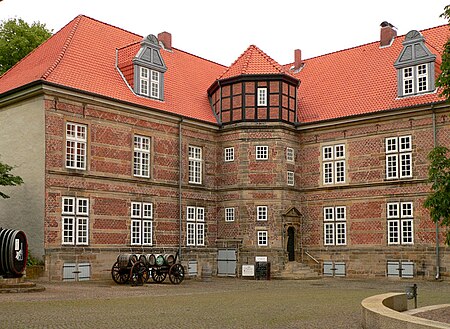Landestrost Castle
Buildings and structures in Hanover RegionCastles in Lower SaxonyForts in GermanyGerman castle stubsHanover region geography stubs ... and 4 more
Local museums in GermanyLower Saxony building and structure stubsMuseums in Lower SaxonyNeustadt am Rübenberge

Landestrost Castle (German: Schloss Landestrost) is a castle in the Weser Renaissance style that was built between 1573 and 1584 in Neustadt am Rübenberge in the north German state of Lower Saxony. Integrated into fortifications, together with the town, it developed into an urban fortress typical of the 16th century. The castle was the representative residence and administrative headquarters of its master, Duke Eric II of Brunswick-Lüneburg. During the construction period from 1574 he renamed the town of Neustadt as Landestrost, something which was reverted after his death in 1584.
Excerpt from the Wikipedia article Landestrost Castle (License: CC BY-SA 3.0, Authors, Images).Landestrost Castle
Schloßstraße,
Geographical coordinates (GPS) Address External links Nearby Places Show on map
Geographical coordinates (GPS)
| Latitude | Longitude |
|---|---|
| N 52.50262 ° | E 9.4629 ° |
Address
Schloss Landestrost
Schloßstraße 1
31535
Lower Saxony, Germany
Open on Google Maps








